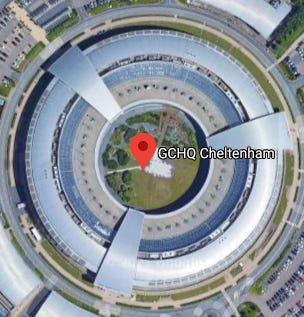2021iii26, Friday: Monster beamy.
Fat ships and hydrodynamics. And GCHQ makes the most of the fact that one of my heroes is now on a banknote.
I’m sorry. I’d intended to write something on empathy - a hugely undervalued and misunderstood trait, for us advocates as much as for everyone else. But I’m facing the usual barrister clashing-deadline problem today, so I have to content myself with a couple of links.
Someone is right on the internet, 1: One of the benefits of blogs, and now of the less toxic corners of social media, was always said to be that genuine, unfiltered expertise was never more than a click away. (Let’s not do the “experts suck” thing. Please?)
But good old-fashioned mainstream media also has an important role here. Not all experts can communicate. But the best reporters excel in taking expertise and translating it for us lay people, without diluting its true value.
For anyone puzzled, baffled or just plain incredulous about what’s happening in the Suez Canal right now, the FT does a glorious job of dealing with the hydrodynamics behind the grounding - or as the writer, Brendan Greeley, puts it, “walling”, of the Ever Given.
(The main story is here. Sorry, subscribers only; this is a gift link, but it’ll only work for three people, so if you do have an FT subscription please use the first link.)
A taster:
By any historical standards, the Ever Given is a monster. But it’s a monster in a specific way: it’s fat. The more containers you can stack on a single ship, the cheaper the marginal cost of each new container. But the specific engineering of container ships mean that they can’t get longer; they have to get wider. An oil tanker is a shoe box with a lid: hull on the bottom, oil in the middle, deck on top. But a container ship is a shoebox without a lid: hull on the bottom, then containers all the way up. It’s not as strong without the lid.
Why no lid? Because there’s a limit to how long you can make something out of welded steel plates, given the forces at play in the open ocean. So for container ships, you make them wider - “monster beamy”, as Brendan puts it - and pile them higher. And what did this mean for the Ever Given?
Wind definitely played a role, but there was probably something else happening, too. The ships keep getting bigger. But everything on Earth stays the same size.
That’s how he ends, but I’m not really giving anything away by quoting that. The piece is great. If you can, read it.

Someone is right on the internet 2: Of the UK’s three main intelligence agencies, the funny thing is that the least prominent in popular culture is both the most overt, and the most expensive. It’s the Government Communications Headquarters or GCHQ, whose main site is a huge round building in Cheltenham (the shape of which is rather elegantly reflected in its logo and typography).
As the government’s code-makers and code-breakers, as well as the outfit responsible for securing and penetrating networks and systems, their importance has in fact never been higher. So it’s no surprise they’re making the most of one of their own now appearing on the new £50 note, in the shape of Alan Turing.
My first real brush with computers was in the Turing Room at King’s College. Back in those prehistoric days when most students didn’t have their own computers, the Macs arrayed in the Turing Room were - for those of us who by the 1990s had already moved away from hand-writing essays - a home from home. (And also cemented me on the Mac vs PC side of the equation.)
However, I didn’t know much about Turing himself. I didn’t know he'd formulated much of the theoretical basis for computing. I didn’t know he’d been the linchpin of the UK’s efforts to crack Enigma at Bletchley Park (home of the Government Code and Cipher School, GCHQ’s precursor) in WW2. I didn’t know he was gay. I didn’t know he was hounded for it. I didn’t know he was charged and convicted for indecency as a result. I didn’t know he lost his security clearance. I didn’t know he was compelled to take drugs as an alternative to prison. And I didn’t know the misery of this compelled him to kill himself.
I learned later. Marvelled at the man. And grieved for him, in despair that a mind like that should be thrown away by such paltry injustice.
He’s been posthumously pardoned. His home town, Manchester, has a statue to him, with a plaque that reads:
Father of computer science, mathematician, logician, wartime codebreaker, victim of prejudice.
All true.
Turing was a marvel, and an icon - to me and many others. Despite the controversy that sometimes attaches to banknote choices (and the fact that generally I don’t think UK ones have been terribly attractive), I love the fact that Turing will, from his birthday date in June, grace the £50.
And it’s probably fitting that GCHQ is marking the launch with a series of puzzles. While cryptography today is fundamentally a computing problem, for most of human history it’s been about someone pitting their brain against someone else’s, and seeing which (forgive me) cracks first.
Cards on the table. I sorted the first, which is a straightforward bit of general knowledge. But after that, I’m stuffed. (I may love Cracking the Cryptic, but mostly as a spectator. I can only do their puzzles with a lot of handholding.) For smarter and more corkscrew minds than mine, though, I imagine this should be fun. Let me know how you get on.



